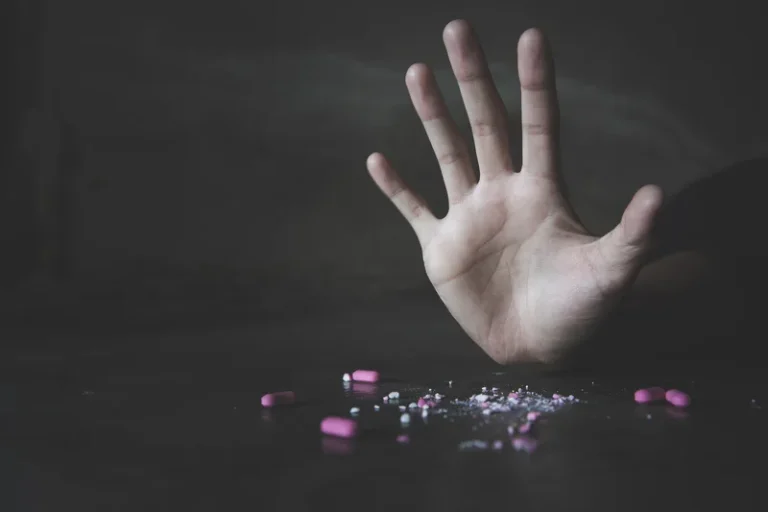The Drug Detox Process and How to Find Detox Centers Near Me
For many substances, withdrawal can cause fluctuations in heart rate, blood pressure and temperature, so these vital signs are closely monitored by nursing staff. A safe medical detox occurs at a licensed facility with medical oversight from experienced and caring staff. Methadone has been used to prevent opioid withdrawal since the 1950s and has been a mainstay of addiction treatment. It is a fully activated opioid and has all of the risks of an opioid; however, when well monitored, methadone detox is highly effective at preventing opioid withdrawal symptoms.
Is Alcohol or Drug Detox at Home Safe?
Some people may try to treat addiction on their own by using an at-home drug detox kit, particularly if they have an urgent need to pass a urine drug test. People who try detox kits may also experience heavy withdrawal symptoms and cravings, and they are often ill-equipped to deal with these effects without the help of a medical professional. Most people who struggle with substance use will build a tolerance to and become physically dependent on their drug of choice.
Substance Use Helpline
The timeline for detox varies based on individual needs and the specific substances used. Effective, client-focused medical detox facilities recognize this fact. They build and adjust a detox timeline that works for the individual instead of enforcing a specific time limit for everyone. For that https://ecosoberhouse.com/ reason, we offer case management support to all clients. This includes help with needs like filing for short-term disability and medical leave, as well as housing and other vital concerns. The objective is to address the practical issues that can get in the way of completing a detox program.
Steve-O says he ‘could’ blame his drug addiction on Mötley Crüe
- If you or a loved one are seeking recovery services that accept your medical insurance, reach out to Infinite Recovery today.
- Cocaine is highly toxic, even in small doses, and can cause acute cardiovascular or cerebrovascular emergencies and seizures.
- Surges of dopamine in the reward circuit cause the reinforcement of pleasurable but unhealthy behaviors like taking drugs, leading people to repeat the behavior again and again.
As with most other chronic diseases, such as diabetes, asthma, or heart disease, treatment for drug addiction generally isn’t a cure. People who are recovering from an addiction will be at risk for relapse for years and possibly for their whole lives. Research shows that combining addiction treatment medicines with behavioral therapy ensures the best chance of success for most patients. Treatment approaches tailored drug detox to each patient’s drug use patterns and any co-occurring medical, mental, and social problems can lead to continued recovery. When a person experiences substance withdrawal, medical detox is safe and effective for eliminating substances from the body. Each step of the process is supervised by a physician-led medical team of experienced nurses and clinical staff trained in treating and managing addiction.
- In addition, self-care is a vital foundation for a healthy new identity.
- Stimulants include amphetamines, meth (methamphetamine), cocaine, methylphenidate (Ritalin, Concerta, others) and amphetamine-dextroamphetamine (Adderall XR, Mydayis).
- Help from your health care provider, family, friends, support groups or an organized treatment program can help you overcome your drug addiction and stay drug-free.
- When a person uses drugs or alcohol for a prolonged period, they can experience a wide range of physical and psychological symptoms when they try to reduce or stop substance abuse.
- Support is available for friends and family members through organizations such as Al-Anon and Nar-Anon.
Find treatment services
Symptoms typically peak around the 72-hour mark and start to reduce in severity after approximately 5 to 7 days. Attempting a major detox on your own is not typically recommended as a safe practice. A 2011 study found that combining an effective detox program with quality outpatient treatments could lead to significantly improved outcomes for some participants.
What happens to the brain when a person takes drugs?
In fact, people in recovery might be better off if the term “relapse” were abandoned altogether and “recurrence” substituted, because it is more consistent with the process and less stigmatizing. Many types of recovery support are available, and many people make use of more than one type at any time and may shift from one type of support to another as recovery proceeds and needs evolve. They also value having role models of recovery and someone to call on when the recovering self is an unsteady newborn. Data show that the programs are helpful for some but not for everyone. Different types of medications may be useful at different stages of treatment to help a patient stop abusing drugs, stay in treatment, and avoid relapse.
- If dangerous withdrawal symptoms or complications occur, it can be harder to seek immediate medical attention.
- You should certainly go to the emergency room (ER) anytime you’re having serious withdrawal symptoms like difficulty breathing, rapid heart rate, or seizures.
- Either way, it often keeps people trapped in addictive behaviors.
- It gets in the way of recovery, self-acceptance, and accessing help when needed.
The prospect of change engages people in an inner dialogue about hope, disappointment, and accountability. Saying a mantra, substituting thoughts of recovery goals, praying, reading something recovery-related, reaching out to someone supportive—all are useful tactics. Cravings diminish and disappear in time unless attention is focused on them. Negotiating with oneself for a delay of use, which doesn’t deny the possibility of future use, and then getting busy with something else, capitalizes on the knowledge that cravings dissipate in about 15 minutes.
For one, it may be more difficult for some to stay the course in their home environment, where exposure to certain people or things could trigger a relapse or return to drug use. In rare cases alcohol detox can cause delirium tremens (DT), a life threatening condition that can lead to stroke, heart attack, and death if left untreated. For these reasons, alcohol detox is usually done in a hospital, detox facility, or an alcohol rehab center. Most people turn to professional detox services, like those offered at American Addiction Centers, to make their detox experience safe and as comfortable as possible. Some detox centers even offer same-day admission, depending on their admittance capacity, your location, and various other factors.
Where Does Alcohol or Drug Detoxification Take Place?
The Gun Control Act prohibits drug users from possessing firearms. The Bureau of Alcohol, Tobacco, Firearms and Explosives ruled the ban applies to “a conviction for use or possession of a controlled substance within the past year.” Once the opioids were no longer effective, she moved on to heroin. “This is a little hard for me to talk about, but I’ve always promised you that I will always be honest with you about where I’m at and what’s going on in my road to recovery,” she wrote on Instagram at the time. Her addiction issues continued to grow through the years when her family was cast in the spotlight in one of the first reality television shows, “The Osbournes.” Her first attempt at rehab was when she was 19 years old.
Stimulants include amphetamines, meth (methamphetamine), cocaine, methylphenidate (Ritalin, Concerta, others) and amphetamine-dextroamphetamine (Adderall XR, Mydayis). They’re often used and misused in search of a “high,” or to boost energy, to improve performance at work or school, or to lose weight or control appetite. “Cold turkey“ is a term used to describe the decision to abruptly stop using a substance.




